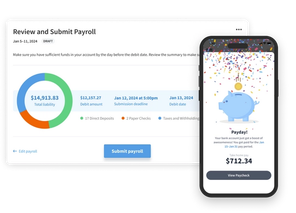
Eddy’s HR Mavericks Encyclopedia
The world's largest free encyclopedia of HR, with 700+ HR articles and podcasts.
Created by Eddy and our HR Mavericks community.
COBRA
When you hear the term COBRA, you can’t help but think of a big snake. Most employees and employers do not know how this insurance law works until it’s time to elect for coverage after termination. In the stress of employment separation, COBRA can seem confusing, but it is simply the continuation of insurance at the cost of the former employee.
What Is COBRA Insurance?
COBRA Insurance, put simply, is the continuation of an employer-sponsored group health plan (medical, dental, or vision) at the expense of the employee rather than the former employer. After an employee is terminated (voluntary or involuntary) from a company, they may elect to pay the entire insurance premium to continue coverage. COBRA is a law that stands for “Consolidated Omnibus Budget Reconciliation Act,” and was enacted in 1985. Former employees are known as Qualified Beneficiary (QB) when they elect for coverage.
COBRA vs Individual Health Insurance
COBRA is one health insurance option for former employees. Benefits include continuing the same coverage levels, visiting previously selected physicians, and avoiding a reset of the annual deductible. There may be more affordable or generous coverage options through other group health plan coverage (such as a spouse’s plan), the Health Insurance Marketplace, or Medicaid.
Who Qualifies for COBRA?
According to the Department of Labor, to qualify for COBRA, an employee must:
- Be enrolled in a group health plan (medical, dental or vision insurance) at a company with more than 20 employees who work more than 50 percent of the company’s typical business days.
- Be terminated for any reason other than “gross misconduct.”
- Receive a reduction in hours of employment that disqualifies them from the employer’s group healthcare coverage.
A spouse or dependent child can become eligible for COBRA if:
- Their coverage was provided by the QB’s group health plan and the above requirements are met.
- The QB becomes entitled to Medicare.
- They divorce or legally separated from the employed spouse and are no longer eligible for coverage from their group health plan.
- The covered employee dies.
- The child loses “dependent” status under the plan rules. According to the Affordable Care Act, plans that offer healthcare coverage to children on their parents’ plan must be available until the adult child is 26.
Once COBRA is in effect, coverage would end if one of the following occurs:
- The QB is covered under another group health plan (such as new benefits with a new employer).
- The QB becomes entitled to Medicare.
How Long Does COBRA Last?
COBRA lasts up to 18 months of continued insurance coverage. In some instances, an extension up to 36 months can be granted for a qualifying event. As mentioned above, qualifying events include the death of the employee, divorce, a dependent child becoming ineligible, and becoming entitled to Medicare.
How Do I Sign Up for COBRA?
Step 1: Wait for the Initial Letters
After termination from the employer, two letters will arrive called a “general rights notice” and “specific rights notice.” The general rights letter details what COBRA is and how it works; the specific rights notice details how much monthly premiums will be, how to pay premiums, and how to end coverage if needed. Employers can provide these letters themselves or hire a third-party benefits administrator to handle COBRA.
Step 2: Elect for Coverage
After the letters arrive, a QB can select one, two, or all the insurance options for continued coverage. There are 60 days from the first day of COBRA availability to select the coverage and make payments to ensure no gaps in coverage.
Step 3: Maintain Active Coverage
After electing for COBRA, QBs must maintain coverage month to month to avoid cancellation of benefits. Payments can be made month to month or for multiple months at a time. Those on COBRA will use the same insurance card and policy information to receive services.
Topics

Austin Morgan
Austin became the HR Manager at Nursa in 2022 where he is building a HR department in the company's second year of operation. Before that he worked as an HR Director at Discovery Connections and an Account Manager for a Section 125 benefits and COBRA administrator. He graduated from Brigham Young University with a Bachelor of Science (BS) in Exercise Science in 2019 and from Southern Utah University with a Masters of Business Administration (MBA) with an emphasis in Organizational Leadership in 2021. At the end of 2021, he became certified with SHRM-CP. Originally from Oklahoma, Austin enjoys trying new foods in new places he travels to, watching college football, and snowboarding at the local resorts in Utah. He has been married to his wife since 2019 and owns a cockapoo named Hershey.
Frequently asked questions
Other Related Terms
Eddy’s HR Mavericks Encyclopedia
COBRA
When you hear the term COBRA, you can’t help but think of a big snake. Most employees and employers do not know how this insurance law works until it’s time to elect for coverage after termination. In the stress of employment separation, COBRA can seem confusing, but it is simply the continuation of insurance at the cost of the former employee.
What Is COBRA Insurance?
COBRA Insurance, put simply, is the continuation of an employer-sponsored group health plan (medical, dental, or vision) at the expense of the employee rather than the former employer. After an employee is terminated (voluntary or involuntary) from a company, they may elect to pay the entire insurance premium to continue coverage. COBRA is a law that stands for “Consolidated Omnibus Budget Reconciliation Act,” and was enacted in 1985. Former employees are known as Qualified Beneficiary (QB) when they elect for coverage.
COBRA vs Individual Health Insurance
COBRA is one health insurance option for former employees. Benefits include continuing the same coverage levels, visiting previously selected physicians, and avoiding a reset of the annual deductible. There may be more affordable or generous coverage options through other group health plan coverage (such as a spouse’s plan), the Health Insurance Marketplace, or Medicaid.
Who Qualifies for COBRA?
According to the Department of Labor, to qualify for COBRA, an employee must:
- Be enrolled in a group health plan (medical, dental or vision insurance) at a company with more than 20 employees who work more than 50 percent of the company’s typical business days.
- Be terminated for any reason other than “gross misconduct.”
- Receive a reduction in hours of employment that disqualifies them from the employer’s group healthcare coverage.
A spouse or dependent child can become eligible for COBRA if:
- Their coverage was provided by the QB’s group health plan and the above requirements are met.
- The QB becomes entitled to Medicare.
- They divorce or legally separated from the employed spouse and are no longer eligible for coverage from their group health plan.
- The covered employee dies.
- The child loses “dependent” status under the plan rules. According to the Affordable Care Act, plans that offer healthcare coverage to children on their parents’ plan must be available until the adult child is 26.
Once COBRA is in effect, coverage would end if one of the following occurs:
- The QB is covered under another group health plan (such as new benefits with a new employer).
- The QB becomes entitled to Medicare.
How Long Does COBRA Last?
COBRA lasts up to 18 months of continued insurance coverage. In some instances, an extension up to 36 months can be granted for a qualifying event. As mentioned above, qualifying events include the death of the employee, divorce, a dependent child becoming ineligible, and becoming entitled to Medicare.
How Do I Sign Up for COBRA?
Step 1: Wait for the Initial Letters
After termination from the employer, two letters will arrive called a “general rights notice” and “specific rights notice.” The general rights letter details what COBRA is and how it works; the specific rights notice details how much monthly premiums will be, how to pay premiums, and how to end coverage if needed. Employers can provide these letters themselves or hire a third-party benefits administrator to handle COBRA.
Step 2: Elect for Coverage
After the letters arrive, a QB can select one, two, or all the insurance options for continued coverage. There are 60 days from the first day of COBRA availability to select the coverage and make payments to ensure no gaps in coverage.
Step 3: Maintain Active Coverage
After electing for COBRA, QBs must maintain coverage month to month to avoid cancellation of benefits. Payments can be made month to month or for multiple months at a time. Those on COBRA will use the same insurance card and policy information to receive services.
Topics

Austin Morgan
Austin became the HR Manager at Nursa in 2022 where he is building a HR department in the company's second year of operation. Before that he worked as an HR Director at Discovery Connections and an Account Manager for a Section 125 benefits and COBRA administrator. He graduated from Brigham Young University with a Bachelor of Science (BS) in Exercise Science in 2019 and from Southern Utah University with a Masters of Business Administration (MBA) with an emphasis in Organizational Leadership in 2021. At the end of 2021, he became certified with SHRM-CP. Originally from Oklahoma, Austin enjoys trying new foods in new places he travels to, watching college football, and snowboarding at the local resorts in Utah. He has been married to his wife since 2019 and owns a cockapoo named Hershey.
Frequently asked questions
Other Related Terms
Eddy's HR Newsletter
Sign up for our email newsletter for helpful HR advice and ideas.


